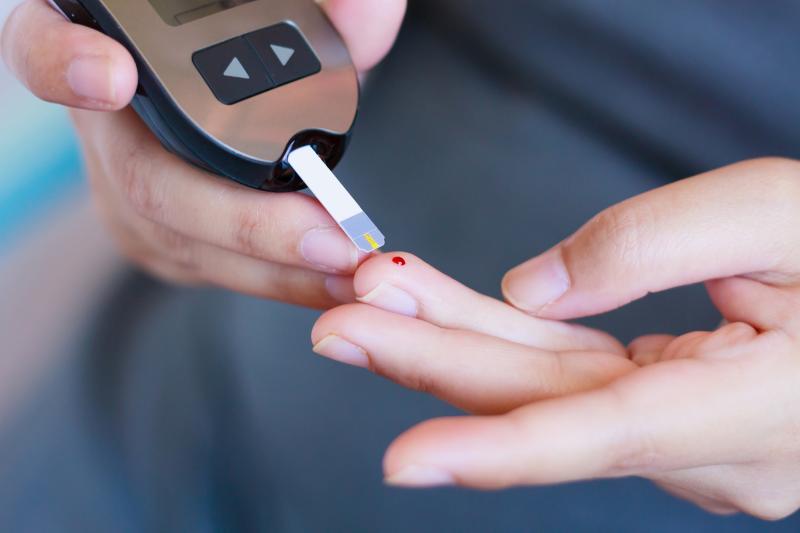 The current blood glucose monitor requires a disposable test strip and a small drop of blood.
The current blood glucose monitor requires a disposable test strip and a small drop of blood.The Diabeloop closed-loop (CL) automated insulin delivery (AID) device outperforms conventional open-loop (OL) machines for reducing hyperglycaemic excursions in type 1 diabetes (T1D) patients under challenging carbohydrate situations, according to a new study.
“The therapeutic benefit of Diabeloop was associated with a marked reduction of hyperglycaemic excursions, not only following gastronomic dinners, but also after sustained physical exercise,” said researchers.
Thirty-six T1D patients (mean age, 49.9±14.5 years; 57.9 percent female) were included in the three-armed randomized pilot trial. Participants spent a significantly longer period in the tight glucose range of 80–140 mg/dL during the CL period than in the OL period (63.2 percent vs 40.9 percent; p<0.0001). [Diabetes Obes Metab 2019;doi:10.1111/dom.13898]
The resulting time-in-range (TIR) increase was 22.3 percent which, in absolute terms, corresponded to a total of 1 hour and 48 minutes.
Expanding the definition of the normal range of glucose concentrations to 70–180 mg/dL did not meaningfully change the initial findings. Patients spent a significantly longer TIR during the CL vs OL conditions, both for their entire durations (79.4 percent vs 64.1 percent; p<0.0001) or during night-time only (86.9 percent vs 67.2 percent; p<0.0001).
Hyperglycaemic excursions were recorded once glucose levels exceeded 180 mg/Dd. The mean time in this range was lower with the CL device (overnight: 10.9 percent vs 28.3 percent; whole day: 17.9 percent vs 31.9 percent).
Moreover, the average time spent with glucose levels >250 mg/dL was likewise significantly shorter during the CL than the OL conditions (3.3 percent vs 8.0 percent; p<0.001).
The CL device likewise effectively prevented hypoglycaemic excursions (<70 mg/dL) with borderline significant superiority to the OL comparator (2.1 percent vs 4.6 percent; p=0.0532).
Taken together, these led to significantly greater patient satisfaction when using the CL device (31.0±5.5 vs 26.0±5.5; p<0.001).
“Diabeloop CL was able to reduce hyperglycaemic events in harsher lifetime conditions resulting from the consumption of copious gastronomic meals at dinner, substantially improving the amount of night-time spent in the glycaemic target range, as well as mean glucose level and glycaemic variability,” said the researchers.
In the present study, participants were subjected to three situations: copious dinners, sustained and repeated bouts of exercise followed by uncontrolled food intake, and rest, which was taken as the control. They were also randomly assigned to either the CL or OL device. The cross-over occurred after a 72-hour washout period.
Several methodological shortcomings are worth noting, the researchers said. Among these are the limited statistical power due to the low number of participants and the population-based approach to the sample. These may have resulted in the underestimation of hypoglycaemic outcomes and site-specific effects.
“The short duration of the study may also have reduced the impact of the accumulation of gastronomic foods, the incidence of hypoglycaemic events, and has not allowed the medium- and long-term evaluation of the acceptance and efficacy of the Diabeloop CL system,” they added.
“Nevertheless, our study compares well with most other studies that use AID during 24 hours, a follow-up of less than a week and a limited number of participants,” the researchers said.